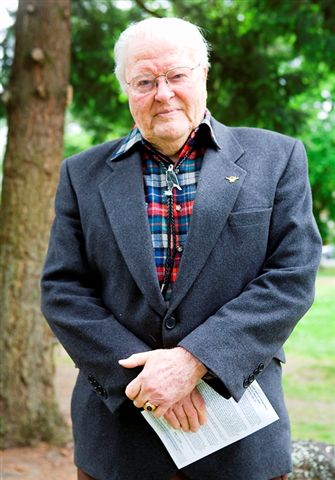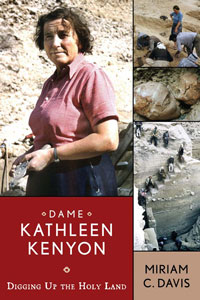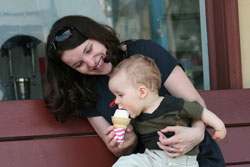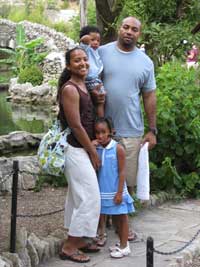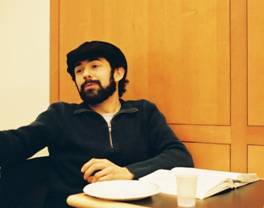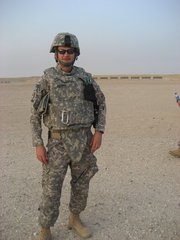Liz Saluke, who graduated with Honors in 2008, is currently pursuing an MFA in Dance at Florida State University. She writes “Though most of my current academic pursuits are in the field of Dance, I am always using my cultural historian lens in my creative work. And I still credit Prof Judith Miller for being one of the main reasons I realized that my professional passion was in fact Dance, and not Revolutionary France.”
Category / Alumni
Update from Vaughn Davis Bornet
Vaughn Davis Bornet, B.A. 1939, our oldest living undergraduate alumnus, will turn 94 on October 10, 2011. Enjoying normal health, he attends Rotary routinely on Thursdays. He shared many memories of Emory faculty. He writes, “Garland Smith is mostly responsible for my later editing skills, I should think. He gave F’s on a paper for ANY misspelled words, including AND without the N and THE without the H. In another single course he transmitted a lifelong love of poetry (exercised now and then). Gaty Workman in Abnormal Psychology took us to Milledgeville to what was then a genuine insane asylum. Much memorialized Dean Rece transmitted in one course more comprehension of the King James Bible than years of Sunday School. No, those books are not in chronological order, and Isaiah in addition to being spelled ‘that way’ is two books with vast time between them. Tom English offered his tour de force in the English Language, and the American Literature course introduced Walt Whitman in all his eccentricities (and beauty of phrasing). While I found vital qualities in Southernist Hayward J. Pearce and English history lover Ross McLean, my favorite, and friend, was youthful Mose Harvey of UC Berkeley whose concentration on Russia probably detoured him to a lifetime in the State Department. I remember him waving airily toward a pile of unbound documents and saying something like ‘Here in this office I have more information than the whole Harvard History Department!’ I believed. We used that Candler Library instead of textbooks in those Depression years (1935 to 1940); we didn’t even have texts in US and Western Civ courses. No offense to the History Department, but I did get a huge boost from several Journalism courses back then. And I’m so glad I sweated through International Law and Constitutional Law under Cullen Gosnell, heavily and routinely using the Law Library and those huge law books; again, no text.” He also remembers Leroy Loemker in the Philosophy Department.
Since earning his Honors degree in History at Emory, he has had an eventful life and written a long list of books in United States history. Just this year, he published Speaking Up for America: In the Rogue River Valley during the Vietnam War (2011), a collection of speeches and essays reflecting on those decades in US history, and Leaders and Issues at Southern Oregon College, 1963 to 1980 (2011). During World War II, he entered the Navy as Yeoman First class and then earned his commission. He retired as Commander from the Naval Reserves. He received his doctorate from Stanford University in 1951. He held a number of university positions; most notably, he was Professor of History and Social Sciences and the Chairman of the Social Sciences Division of the Southern Oregon University. For twenty years, he served on the Oregon Committee of the U.S. Civil Rights Commission. His articles have been published in many journals, including The American Archivist and The Historian. Dr. Bornet held a number of research positions at prominent institutions, such as the RAND Corporation, the Ford Foundation, the Commonwealth Club of California and the Institute of American History at Stanford University. His books cover a very wide range of important topics in twentieth-century United States History: Welfare in America (1960); Labor Politics in a Democratic Republic (1964); Herbert Hoover, President of the United States (co-authored, 1975); and The Presidency of Lyndon B. Johnson (1983). He wrote the long summary appraisal article ‘United States’ three times for encyclopedia yearbooks. His sketch appears in several Who’s Who publications of the Marquis Company, and he has the Distinguished Service Medallions of the American Heart Association and Oregon Heart Association.
Since 1963, he has called Oregon home. Still by his side is his choice for a mate: Beth W. Bornet, who was at their meeting in 1944 the 20 year-old President of the senior class at University of Nevada, Reno and hailed from tiny Susanville, California. She has been a leading volunteer honored by many organizations. They live in Ashland, Oregon. Their two children live in California and Connecticut.
This past Memorial Day, he spoke at the Mountain View Cemetery in Ashland. In his speech, he drew connections to Emory’s losses during World War II: “There were deaths from my own fraternity—my catcher when I pitched; the editor of the Emory Wheel newspaper; the dear son of the professor who mentored us Sigma Chis.”
Dr. Bornet’s autobiography appeared in 1995, An Independent Scholar in Twentieth Century America: The Autobiography of Vaughn Davis Bornet.
Update from Charles Le Guin
Charles Le Guin, Ph.D. 1956, has written from Portland, Oregon. He and Thomas E. Mullen (Ph.D. 1959) have remained good friends. Dr. Le Guin describes his studies: “I came to Emory to pursue my PhD in 1950 and Joseph Mathews undertook to guide me to my degree: it took a while—a Fulbright and some teaching—before that was accomplished. I believe I was the sixth History Ph.D. at Emory and the first in European History, and I think I am now the oldest living Emory History PhD. (I think Tom Mullen agrees with this.)” The year Dr. Le Guin finished his degree on the French Revolution, Dr. Mathews was abroad on a Fulbright at Oxford, and so Russell Major took over his training. Dr. Le Guin recounts, “I had had courses from him and he was in Paris when I was there on my Fulbright: indeed, he and Blair were at my wedding there.” (Charles and his wife Ursula still have the samovar and tea cups that the Majors gave them as wedding presents.)
He remembers that there were about three dozen graduate students when he was at Emory. He has looked over the department’s website. “Among the things that amazes me most,” he writes, “is the size of the department: from 1950-56, the period when I was doing my degree, I can recall only ten faculty: Mathews, Major, Posey (shared with Agnes Scott as I recall), Duncan, Rabun, Cuttino, Benjamin, McLean, Wiley, and Young. I think Harvey Young outlived them all – I know, much as I admired the others, he was one of the sweetest men I ever knew, the sort of professor I would most like to have been.” He compared the university’s present graduate stipends with the support available when he was at Emory: “In 1950 I had a scholarship of $750 dollars a term, which was immediately returned to cover my tuition. I can imagine how that wouldn’t be a drop in the bucket these days.”
Dr. Le Guin moved West in 1956 and to Portland State University in 1959, where he taught the French Revolution along with many other topics, ranging from the history of Australia and New Zealand to Canada. He explains, “It was a happy place for me to be, being a part of the development of a fledgling college of 2500 students which has grown into a university with 30,000 students in a remarkably short time: PSU has just had the good sense to hire a new College of Liberal Arts and Sciences dean who was an Emory undergraduate (Susan Beatty, a geographer). I retired in 1995, finished a book with two colleagues (In The Balance: Themes in Global History, 1998), and have since devoted myself mainly to reading any and everything and gardening. One of my great pleasures is seeing Tom Mullen in summers when he comes to Oregon to visit his son and grandchildren. It is a sort of grand two person Emory History reunion way out here on the Upper Left Edge.”
Update from Thomas E. Mullen
Thomas E. Mullen, Ph.D. 1959, has many memories of the Emory History Department from the 1950s. He had J. Russell Major’s course on early modern Europe as well as his seminar on the Estates General of 1614. He writes that, “Had I not already chosen to concentrate on a later period with Matthews for both thesis and dissertation, I could have very happily worked with Major.” (His 1959 dissertation was entitled “The Role of Henri de Blowitz in international affairs, 1871-1903.”) Dr. Mullen held several assistantships in one or another office in the department for his first three years of graduate school at Emory, then he was off to the army in South Carolina and Germany for 21 months before spending a year in England at the University of London. From there he returned to Emory as a TA for one year. Remembering Bell Wiley, Dr. Mullen passed along this anecdote: “I think it was during that year that I heard Wiley cussing himself out, literally and loudly, for not sitting down and starting to WRITE. I had thought my off-color vocabulary had been sufficiently broadened while in the army, but Wiley enriched it a lot more.”
Along with fellow graduate student, Charles Le Guin, he knew Russell Major well, as well as Joseph Mathews, Harvey Young, Jack Rabun, Bell Wiley, Francis Benjamin, George Cuttino, among others. Fellow Emory graduate student—and later associate dean of Emory College—Irwin Hyatt was kind enough to act as best man in Dr. Mullen’s wedding in 1957. Dr. Mullen joined the Wake Forest University History faculty in 1957 and served as dean of the college from 1968 until 1995. In 1995, he was honored with Wake Forest University’s Medallion of Merit.
Update from Marisa Chappell
Marisa Chappell (Marisa Schreihofer), B.A. 1991, just earned tenure and promotion to Associate Professor at Oregon State University in Corvallis, Oregon, where she teaches twentieth-century U.S. history. She recently published two books. The War on Welfare: Family, Poverty, and Politics in Modern America (University of Pennsylvania Press, 2010) is a monograph based on her Northwestern University dissertation (2002), and Welfare in the United States: A History with Documents (Routledge, 2009), co-authored with Premilla Nadasen (Queens College) and Jennifer Mittlestadt (Rutgers) is a short analytical history of the Aid to Families with Dependent Children Program with forty primary source documents intended for undergraduate teaching. She is currently researching a project on community organizing for economic justice in the last third of the twentieth century. She lives in Corvallis with her husband, Patrick Chappell (91C, Psychology), who is an Assistant Professor in the College of Veterinary Medicine, and her thirteen year old son, Everett.
Update from Miriam C. Davis
Miriam C. Davis, B.A. 1986, spent a year studying history and archaeology at the University of St. Andrews on a Robert T. Jones Scholarship after her graduation from Emory. She then earned an M.A. in Medieval Archaeology from the University of York as a Fulbright fellow, before completing her PhD in Medieval History at the University of California, Santa Barbara.
In 2008 Miriam published the enthusiastically received Dame Kathleen Kenyon: Digging Up the Holy Land, a biography of arguably the most important woman archaeologist of the twentieth century in University College London’s Institute of Archaeology series. Archaeologists are generally known for one of two things: making an important methodological contribution to the discipline, or excavating an exciting site. Kenyon did both. In the 1950s she went to the Biblical site of Jericho to look for the walls supposed to have been brought down by Joshua’s conquest. In fact, her excavations pushed back the accepted date of town life by at least 2000 years and resulted in the discovery of the Neolithic portrait skulls — the oldest known examples of realistic human portraiture. Readers at Emory may be interested to know that a few of her small finds are on display at the Carlos Museum. In addition, Kenyon’s excavations were instrumental in spreading what has become known as the Wheeler-Kenyon method to the Middle East, where it has continued to influence archaeological field work to the present day. Since publishing her book, Miriam has been thrilled to be able to speak at both the British Museum and the Kenyon Institute in Jerusalem.
Since 1995 Miriam has taught at Delta State University in Cleveland, MS. But this past year she traded in her title of Professor of History for that of Research Associate in order to move to Montgomery, AL to write popular history, work as a lecturer on history for Smithsonian tours and cruises in Europe, do some academic editing–and live with her husband who is Dean of Liberal Arts at Auburn University Montgomery. At present Miriam is working on a book about the Axeman of New Orleans, a serial killer who terrorized Italian grocers during World War I.
Update from Kelly Damon
Kelly Damon, B.A./M.A. 2005, writes that after she graduated from the History Department, she earned her Master’s in Education from Harvard’s Graduate School of Education in 2007. She explains that she “went on to teach World History to high school freshmen before I left so my husband and I could start a family. Raising a child is the most important thing I’ve ever done, and I’m grateful to Emory’s History Department for its part in making me the parent I am. It was at Emory that I learned how to research a topic, know what questions to ask, evaluate my sources, and know when I need to keep looking. Thanks to Emory, I get answers to my parenting questions from Psychology journals and peer-reviewed books on parenting, not from about.com or authors with better titles than credentials. I can write my husband an annotated bibliography on popular sleep books, and when I am worried about some media hype about how we’re raising our kids, I can look for answers with confidence and feel reassured when I’ve reached a decision that it’s an educated and informed one. And did I mention how much fun it is to travel with a good background in history? Maybe I got a little too upset about the caption in the White Tower that blamed Richard III so concretely for the deaths of the princes, but my husband claims he enjoys having his own tour guide anyway!”
Update from Fay Yarbrough
Fay Yarbrough, Ph.D. 2003, writes, “A lot has happened since I turned in my dissertation, directed by Elizabeth Fox-Genovese, in the summer of 2003. I started my career as an assistant professor at the University of Kentucky. There I taught native and African American history and worked on turning my dissertation into a book. In 2007 I had the opportunity to move to the University of Oklahoma, which brought us much closer to our families (in Lawton, OK, and Houston, TX) and me to my sources. Arthur Terry, my husband, has made these moves with much patience and grace.” Her book Race and the Cherokee Nation: Sovereignty in the Nineteenth Century came out in 2008 with the University of Pennsylvania Press and was the basis of her tenure and promotion to associate professor in 2009. She also co-edited with Sandra Slater the essay collection Gender and Sexuality in Indigenous North America, 1400-1850, which just appeared with the University of South Carolina Press in 2011. “But the biggest, most exhausting, and most fun change has been the arrival of our two children: Wilson Renée in 2006 and Rivers Joseph in 2009,” she writes. “Here is a picture of the family from a recent trip to San Antonio.“
Update from Colin Reynolds
Colin Reynolds is presently a graduate student in the Emory program. He received his B.A. in History from Grinnell College in 2007 and his M.A. in the Social Sciences from the University of Chicago in 2009. He is interested in twentieth-century U.S. political and social history, specifically the rise of conservative populism during the second half of the last century. His advisor is Prof. Joe Crespino, and Colin expects to work closely with both him and Patrick Allitt. He writes, “My recent work has focused on West Virginia. My MA thesis was entitled ‘Born Again Solidarity: Conservative Activism and Organized Labor in the Textbook Controversy of 1974.’ I considered how conservative activists and their rhetoric influenced working-class activism in a 1974 protest against public school textbooks. Most recently I wrote a short history of West Virginia’s Bureau of Negro Welfare and Statistics, considering how this organization operated as part of the state’s government before integration, and how its existence complicates nice distinctions between radical and conservative civil rights activism.”
Update from Alexander Lorenzo Colonna
Alexander Lorenzo Colonna, B.A. in History, French and Pre-Med, 1998, is a Major in the U.S. Army Reserves. He is presently serving at a Combat Support Hospital in Iraq. Last fall, he wrote, “Well I’m finally all grown up and finished with many long years of medical training. I went to med school at MUSC in Charleston, did my General Surgery residency at ETSU in Johnson City, TN, and did an Acute Care Surgery fellowship at Wake Forest. 12 years of work in all.” He is married and his wife, Sarah, did her medicine residency at Wake Forest. Now she is doing a Hematology/Oncology fellowship at Vanderbilt. Their son, Gabriel, is almost two years old. Alexander started a general surgery practice outside of Nashville.
